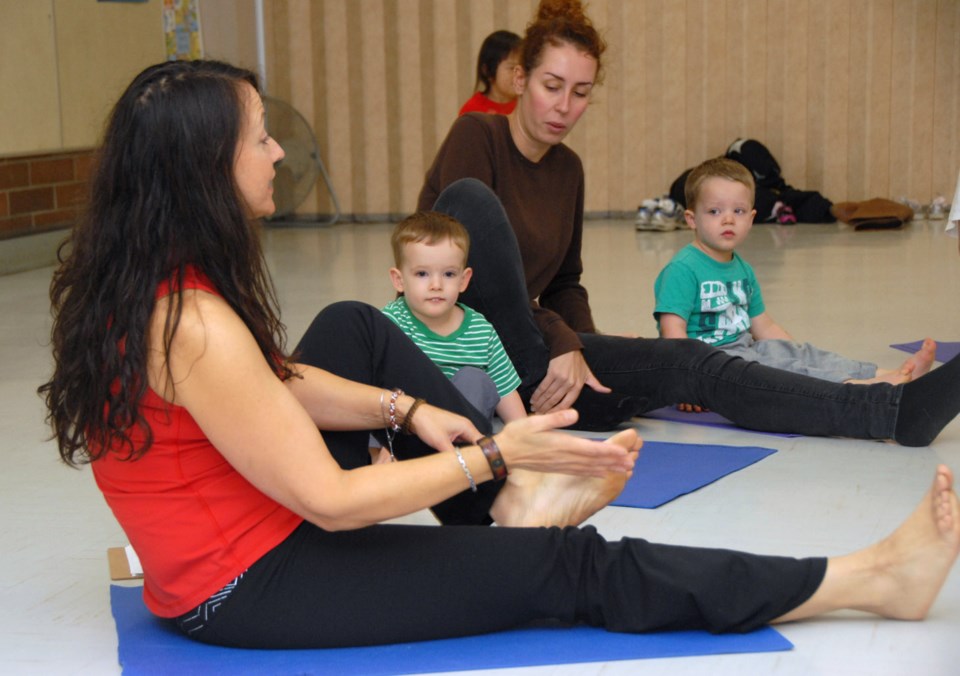It seems obvious that dance is good for a child's growing body.
But what about its effect on the growing brain?
Ask Marcia Jones about that, and you'll find she's passionate on the subject.
Jones is a dancer and teacher who specializes in using movement to enhance early childhood development. And by early, she means truly early - from infancy onwards. Long before kids can walk, or even crawl, they can join a "dance" class and learn, alongside their caregiver, ways to stimulate their development.
"We know now, the research is showing us, early movement is crucial for the development of certain parts of the brain," Jones says, noting that the lower brain and mid-brain regions are all developing rapidly in the early months.
"Those parts of the brain really get cemented in the first year. The first year of life is when it's really crucial," she says.
Ideally, she says, all children cycle through six fundamental movement patterns as their brains develop and neural pathways are opened in the brain. What needs to happen for optimum physical development, she says, is that kids have the freedom to move through those patterns naturally - not to be confined in carseats, swings, bouncy chairs and other restraining devices too much of the time.
"They need to be able to mobilize themselves and work it out for themselves," she says.
That's why she stresses independent movement on the floor, especially on the tummy, for the two-month-to-crawling set in her Baby's First Dance classes.
If they don't get a chance to work all those things out in the first year, Jones says, kids' brains are resilient: they will find a way to compensate. But it may lead to movement that's not efficient or other problems that crop up later on.
"Once they start to mobilize on their own, they start to master certain patterns," she says. "They start having their own motivation to move."
She points out that the young brain is constantly forming and changing, and as the babies move into toddlerhood, they're working hard on balance and coordination.
It's also important for toddlers to stimulate their vestibular systems - the inner ear that regulates the sense of balance and other processes related to movement and spatial orientation.
"Toddlers especially like to tumble and twirl and fall all over the place," Jones says. "They're trying to find a way to get all the fluids moving in their brain."
That movement in turn helps them learn, especially for those who are kinetic learners. "They need that movement to think."
Setting a solid foundation in the early years is important, Jones says, because the stronger the foundation, the more naturally learning will continue to flow.
"It sets up the foundation for the rest of the child's life," she says.
As intimidatingly academic as that may sound, Jones' classes are anything but.
A Toddler's First Dance class at Cameron Recreation Centre - geared for kids who are confidently walking, up to age two-and-a-half - is a case in point.
It opens with a welcome song - each child has their moment in the spotlight to stand up, turn around and run around the circle - and moves through a series of music-and-movement activities including scarf play, instrument play, marching and an obstacle course that includes tunnel crawling, balancing and backwards walking.
All of it's done hand-in-hand with a caregiver - in this class, mostly moms, but with a nanny and a dad also taking part.
Watching the class you'll see a room full of giggling, running, spinning munchkins, playing with instruments, dancing with scarves and putting themselves through the obstacle course - more often than not going off course and having to be steered back to the task at hand by mommy.
The huge smiles on the little faces testify to how much fun they're having being here together.
It's working for Lorena Flouret and her almost-two-year-old daughter, Victoria.
"Since she was little she likes to dance," Flouret says with a smile. She's seen growth in the little girl already, she says, noting Victoria will even do some of the movements from class at home. "What I like is how she starts understanding the class, and she starts to participate."
Jennifer McPherson agrees. She's here with 20-month-old Sarah, and she likes the chance for Sarah to interact with the other kids. "Whenever we put on music at home she starts dancing. When music comes on, she starts moving, she does some of the movements (from class)."
For Kristin Vandegriend and 20-month-old Alexa, class is a fun social outing for both of them - some of their friends from a StrongStart drop-in program at a local elementary school are also in the class, and both moms and kids have some extra bonding time at dance class.
"She likes being with other kids," Vandegriend says.
And, she notes with a laugh, "She has a lot of energy. We needed somewhere to tire her out."
The parent-child bonding is an important part of class for Jones.
"Moving with an adult in these classes is about connection," Jones points out. "It's not about, 'Oh, you go out and play, it's 'Let's play together.'"
The class works with what children naturally do best: play.
"Kids love to move," Jones says. "It's inherent, it's natural, it's fun."
And, even better, it provides the basis for growth and learning as the toddlers become preschoolers - and beyond.
"It sets up the foundation for the rest of the child's life," Jones says.
Can't really ask for more than that.



